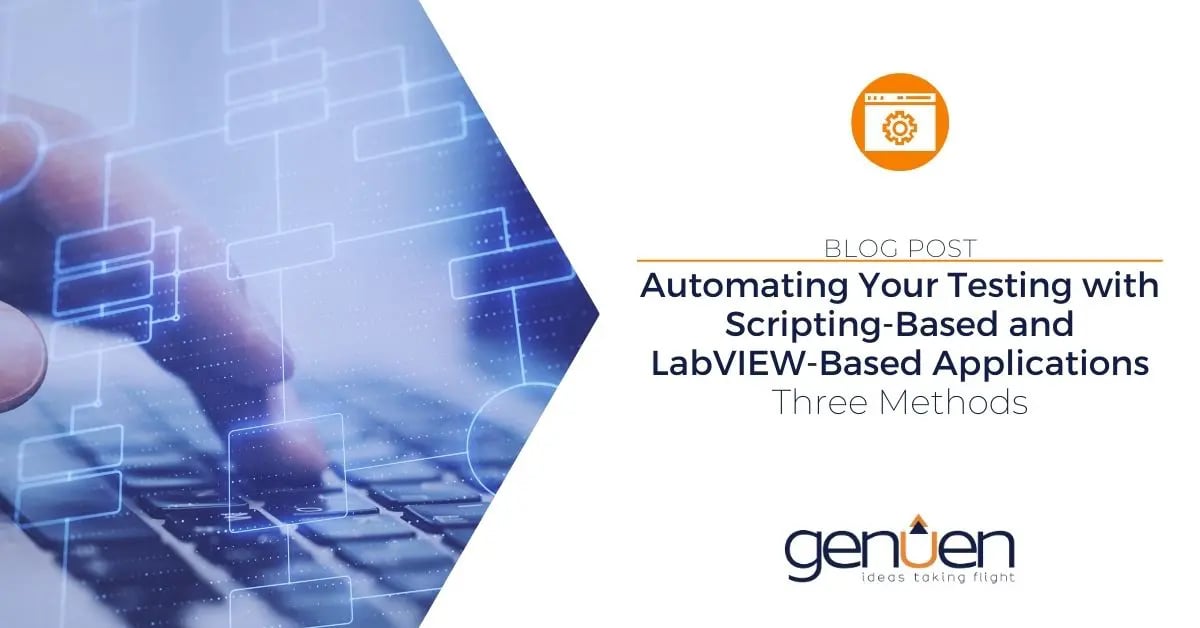In today’s world, testing is more complex than it used to be. Rigorous safety and regulatory standards require thorough testing that is tedious to perform manually. Automation has become a feature that customers expect to see in their test systems and there are many different ways to achieve it using different applications. Test systems are a significant capital investment—you want to get the most out of them. Using applications that communicate with one another and share resources can help you leverage your investment for higher testing throughput.
Another way to leverage your investment is to use your in-house knowledge and expertise to write new test sequences yourself, in a programming language that you understand. One of the challenges of creating a new program is automation. In this blog post, we’ll be discussing three methods of automating your applications: via a scripting-based application, via a LabVIEW-based application, and a third method that takes advantage of both scripting and LabVIEW applications.

Method 1: Test Automation via Scripting-Based Application
The first method of automating your testing involves writing the entire sequence and all automations exclusively in a scripting language. This method provides a great level of control and allows you to customize the program to your specific needs. By writing the program yourself, you can capitalize on your product knowledge and take advantage of scripting languages that you’re familiar, such as Python or NI TestStand. These languages are simpler than LabVIEW and are more commonly known by engineers, and therefore may not require a specialized software developer.
The greatest disadvantage of this method is the time and labor it takes to develop the applications. If coding is not something your team does often, it can be a time- (and budget-) consuming project. The simplicity of scripting languages can also be a disadvantage. These applications don’t have the same drivers and GUI built into them that LabVIEW does; these features need to be programmed into the scripting-based application.
Method 2: Test Automation via LabVIEW-Based Application
The second method of automating your testing relies exclusively on LabVIEW programming. Unlike scripting-based applications, LabVIEW has low-level functionality and features built into it that can help to simplify your end-user experience, including NI hardware drivers and simple user interfaces.
LabVIEW is a more advanced programming language and requires specific knowledge (or even certification) to program and execute. Without a dedicated LabVIEW architect in-house, this process can be time-consuming (if you try to learn the programming language yourself) and/or expensive (if you choose to hire a LabVIEW architect). Another disadvantage of this method is that your ability to customize the programming is also limited to your LabVIEW capabilities.
Method 3: Automation of LabVIEW via Scripting Languages
The third method of automating your testing builds on the first two methods, enabling you to write your sequences in familiar scripting languages, while also taking advantage of the low-level functionality of LabVIEW system control software. This method requires communication between the script-based application and the LabVIEW-based application. A TCP/IP pipe connection port in the LabVIEW application allows you to send and receive signals from external applications.
While this method requires time and LabVIEW expertise for initial programming to establish the connection between the applications and program the necessary automation, it leverages existing drivers and the familiar GUI built-into LabVIEW applications. This helps you increase your testing flexibility by giving you a base program to grow with your needs. As adjustments need to be made to test programs or new tests become necessary, users have the freedom to configure the right solution for their products.
Additionally, system control software has a comprehensive view of the resources used in testing and their demand. Executing automation processes in LabVIEW allows for simplified management of shared testing resources, such as power supplies. This can give you the capability to run multiple test parts in close sequence, or even at the same time.
Get the Best of Both with Genuen
With the third method, you can take advantage of the benefits of scripting languages and LabVIEW. Genuen can help you automate your LabVIEW software through your customized scripted application, saving you time and labor, while enabling you to increase your testing throughput. Want to learn more? Contact Genuen to discuss a custom software solution for your project.


